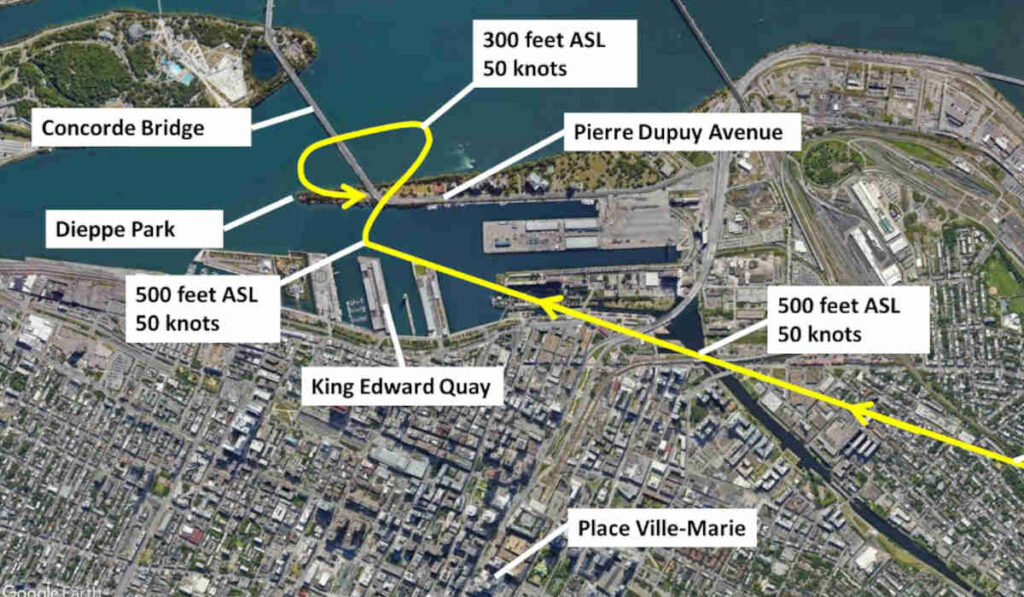
News
Safety
Unfavourable weather, loss of engine power contributed to 2021 fatal small plane crash in Montréal
January 31, 2023 By Wings Staff
 Image showing the occurrence aircraft’s final path (Source: Google Earth, with TSB annotations)
Image showing the occurrence aircraft’s final path (Source: Google Earth, with TSB annotations) The Transportation Safety Board of Canada on January 25 released its investigation report (A21Q0092) into a fatal 2021 occurrence where a Cessna 172M banner towing aircraft lost engine power and collided with terrain in Montréal, Quebec. The investigation found that unfavourable weather conditions along with loss of engine power contributed to the occurrence.
A Cessna 172M on October 2, 2021, operated by Publicité AERO-GRAMME Inc. took off from St-Mathieu-de-Laprairie Aerodrome, Quebec, with one pilot and one passenger on board, to conduct a visual flight rules (VFR) aerial advertising flight in the region of Montréal, Quebec. TSB explains that when the aircraft was flying over the St. Lawrence River near the Concorde bridge, a loss of engine power occurred. The pilot was attempting an emergency landing, continues TSB, when the aircraft’s left wing grazed some treetops, causing the aircraft to cartwheel before colliding with terrain. A post-impact fire occurred and the aircraft was destroyed. The passenger was unable to evacuate the aircraft and was fatally injured, explains TSB, while the pilot sustained serious injuries.
The TSB investigation found, that during flight planning, weather forecasts indicated unfavourable conditions, making it difficult to meet the minimum requirements for a VFR flight; however, the pilot decided to take off and proceed with the flight at an altitude of 500 feet above sea level (ASL), explains TSB, which also notes the decision was likely made under the influence of an unconscious cognitive bias and the time constraints to complete the flight.
TSB also notes atmospheric conditions conducive to carburetor icing most likely caused ice to develop, which would have reduced the engine’s ability to produce enough power to maintain the aircraft’s altitude. Given the amount of ice that was quite likely in the carburetor when the carburetor heat was turned on, TSB explains the melted ice entered the engine causing an additional loss of power. To remain within VFR conditions, TSB reports the pilot continued the flight at an altitude of 500 feet ASL, flying over built-up areas. TSB explains, consequently, when the engine lost power, the possible locations for a safe landing were considerably limited.
See the investigation report for more information.